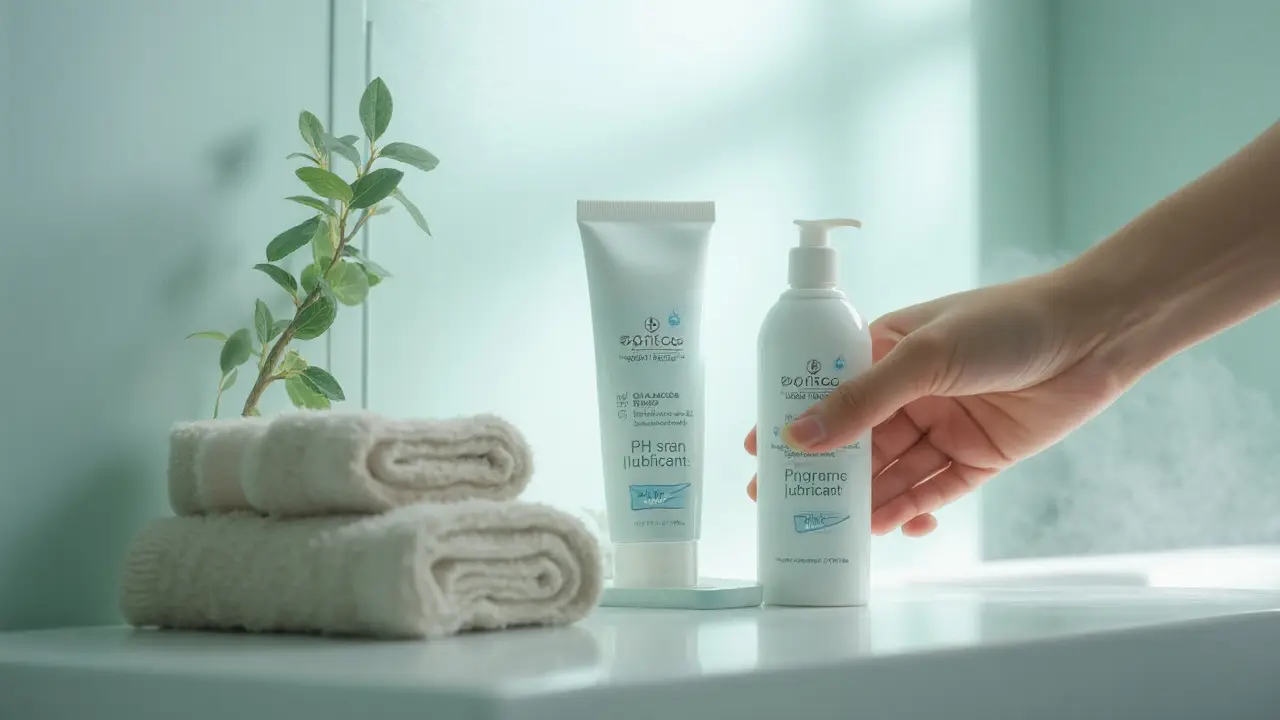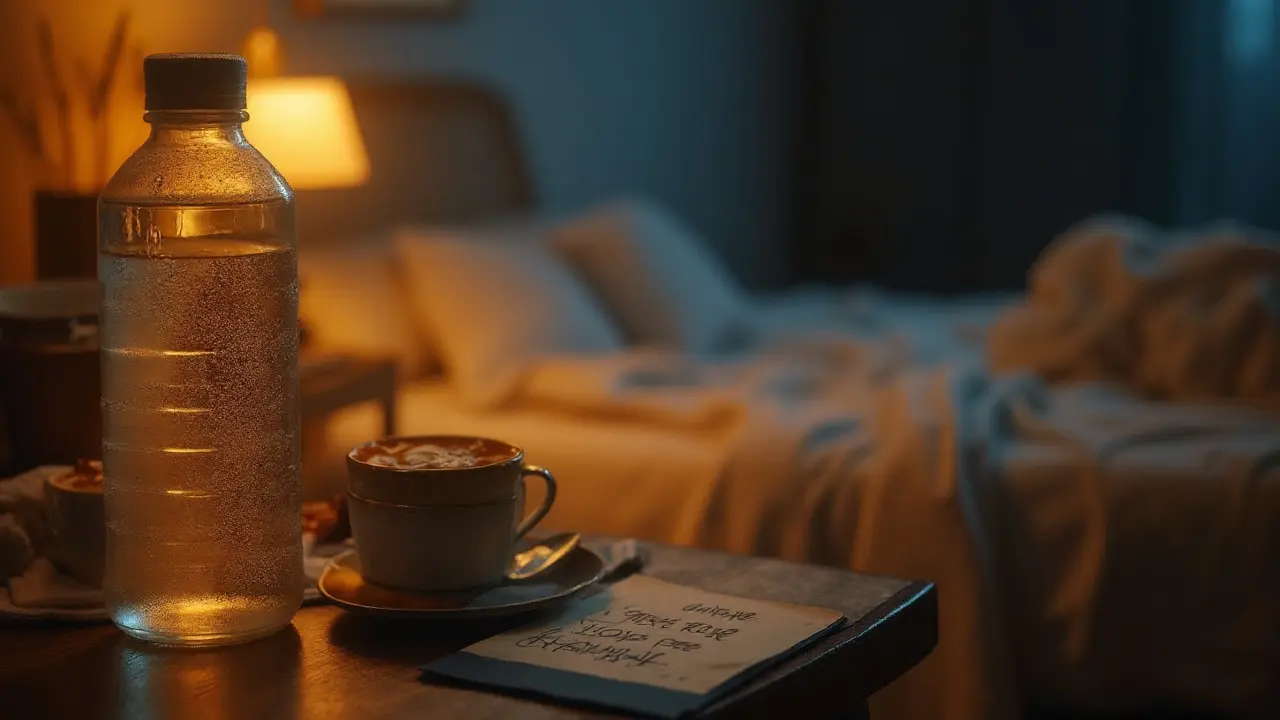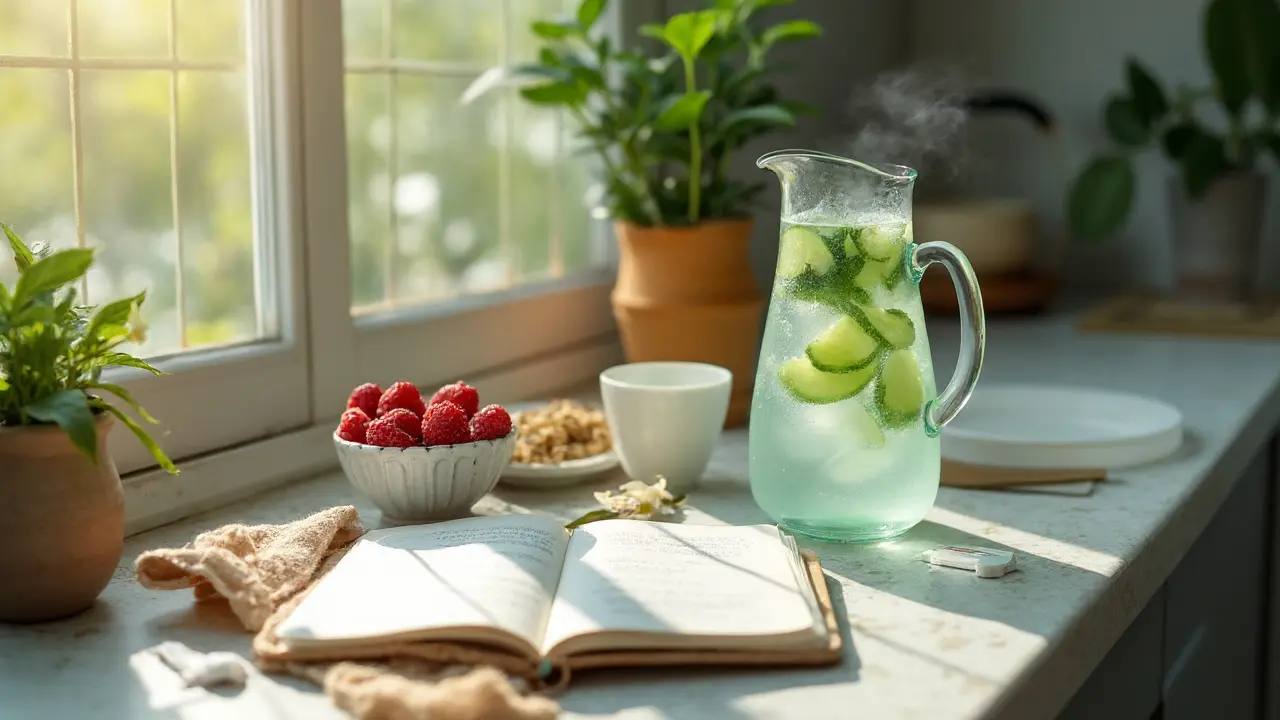People toss around “freshie juice” like there’s a magic drink that makes bodies taste perfect. There isn’t. But you can make smart tweaks that actually help with taste, scent, and comfort-without wrecking your pH or your sheets.
Start with hydration. Aim for pale-yellow urine. That usually means steady water through the day, not a last-minute chug. Alcohol, coffee, and smoking can make fluids taste harsher and dry you out. If you drink, space each alcoholic drink with water.
Pineapple? Fun idea, weak evidence. No reliable study shows a dramatic change from a glass or two. Diet can nudge things, not overhaul them. If you’re prepping for a scene or a date, go light on garlic, onions, and asparagus for 12-24 hours and keep water handy. Think “subtle improvements,” not miracles.
Protect pH. For vulvas: wash the outside only, with warm water or a mild, unscented cleanser; don’t douche or use scented sprays inside-those spike the risk of irritation and infections. For penises: warm water and mild soap, pull back the foreskin gently if present, rinse well, dry. Simple beats scented.
Pick the right lube. Water-based is easy to wash and bed-friendly. Silicone lasts longer and stays slick in water but can stain some fabrics. Oil feels great but wrecks latex condoms and many toys. If yeast infections are a thing for you, look for lubes without glycerin or added sugars.
Oral prep tip that almost no one tells you: don’t brush or floss right before. Tiny gum cuts can boost STI risk and make mouths sting. Rinse with water, use sugar-free mints, wait 30 minutes after brushing if you must.
Have a small kit ready: water bottle, unscented baby wipes (external use only), a soft towel, a stain stick, condoms or dams, a lube you trust, and a spare pair of underwear. It’s not fussy-it saves the night when plans change.
- What “Freshie Juice” Really Means
- Myths vs. Facts (Pineapple, Chlorophyll, Celery)
- Daily Habits That Actually Help
- Hygiene That Works (pH, Products, Laundry)
- Play-Safe Toolkit and Aftercare
What “Freshie Juice” Really Means
“Freshie juice” is internet shorthand for trying to make sexual fluids taste and smell more pleasant, usually by drinking juice or tweaking diet before sex. No single drink flips a switch. Taste and scent come from biology first, habits second, and quick fixes last.
Which fluids are we talking about? Mostly semen and vaginal secretions, plus sweat and saliva that show up during play. Each has its own chemistry, and that’s why the same trick doesn’t work for everyone.
- Semen: typically pH 7.2-8.0 (WHO manual), slightly alkaline. Average volume is around 1.5-6 mL. It contains fructose from the seminal vesicles, citrate and zinc from the prostate, and polyamines (like spermine) that can smell “chlorine-like.” That combo can taste slightly salty, bitter, or sweet depending on the person and hydration.
- Vaginal secretions: normally acidic, pH about 3.8-4.5 in reproductive-age adults because Lactobacillus bacteria make lactic acid. That acidity helps block infections and brings a tangy scent. Blood, semen, or antibiotics can shift pH for a bit.
- Sweat: apocrine glands in the groin and underarms don’t smell on their own; skin bacteria break sweat down into odor. Diet, stress, and laundry habits matter here.
So what does freshie juice promise? A nicer experience during oral and close contact. What actually moves the needle is simple:
- Hydration: steadier water intake means less concentrated fluids and a milder taste. Aim for pale-yellow urine as a quick check.
- Timing: going easy on strong sulfur foods (garlic, onions, asparagus) 12-24 hours before can help. Those sulfur compounds show up in breath, sweat, and sometimes urine fast.
- Microbiome and pH: a balanced vaginal microbiome (lactobacilli-dominant) keeps odor subtle. Douching and perfumed washes can disrupt that and backfire.
- Medications: antibiotics can tilt vaginal pH and flora; metronidazole can cause a metallic taste in the mouth. If something changed right after a new med, that may be it.
- Smoking and alcohol: both dry you out and can make taste harsher. If you drink, alternate with water.
Reality check on pineapple and similar hacks: there’s no solid clinical trial showing big, reliable changes from a glass of juice. Anecdotes exist, but any effect is small and short-lived. If a partner notices a difference, it’s usually because you also hydrated and skipped heavy spices, not because of one fruit.
Baselines help set expectations:
- Normal vaginal scent: clean, slightly tangy or bread-like; metallic around a period is common from iron in blood. A fishy smell, itch, or grayish discharge points to bacterial vaginosis-worth a check with a clinician.
- Normal semen scent: mild chlorine-like or nutty due to polyamines and alkaline pH. Sharp changes after illness, dehydration, or new meds usually settle once those pass.
Bottom line: “fresh” isn’t a flavor you buy. It’s your body chemistry on a good day-well hydrated, balanced pH, low irritation, and no over-the-top perfumes. Use diet tweaks and timing to nudge things, but build around steady habits. That’s how you get a better-tasting, nicer-smelling experience without messing with your health.
Myths vs. Facts (Pineapple, Chlorophyll, Celery)
Short version: food tweaks can nudge taste and smell, but they won’t rewrite your biology. The big drivers are hydration, pH, and overall hygiene. Semen is slightly alkaline (about pH 7.2-8.0). Vaginal fluid is naturally acidic (about pH 3.8-4.5 in most premenopausal adults). That baseline matters more than a single smoothie.
Pineapple: fun idea, thin evidence. There aren’t solid clinical trials showing pineapple dramatically changes how semen or vaginal fluids taste. Seminal fluid gets its natural sugars (mainly fructose) from the seminal vesicles, not from what you ate an hour ago. Pineapple won’t make anyone taste like dessert. At best, you might get a tiny, short-lived shift. Skipping strong-smelling foods (garlic, onions), alcohol, and smoking tends to have a clearer impact than chugging juice.
Chlorophyll: the internet trend is “liquid chlorophyll,” but studies actually looked at chlorophyllin (a copper chlorophyllin complex), and they focused on body or wound odor in specific conditions. Small, older trials and case reports suggest chlorophyllin can blunt odor in trimethylaminuria or chronic wounds, but that’s not the same as changing genital secretions. No good data shows it alters taste down there. Side notes: chlorophyll/chlorophyllin can cause green stool, stomach upset, and can stain. It also won’t fix an infection-related smell.
Celery: claims about “pheromone boosts” come from myths, not human data. Celery is mostly water, has some sodium and potassium, and can help hydration, but it won’t turn you into a scent magnet. Like asparagus, some folks notice urine odor after celery; that’s personal metabolism, not universal.
| Claim | What’s actually known | Evidence quality | Practical take |
|---|---|---|---|
| Pineapple makes you taste sweet | No direct clinical trials on semen/vaginal taste. Any effect is likely small and temporary. Hydration and avoiding strong-smelling foods matter more. | Low (anecdotes; no controlled trials) | Harmless to try, but don’t expect big changes. |
| Liquid chlorophyll removes body/genital odor | Some data for chlorophyllin reducing certain body/wound odors; no data for changing genital taste; won’t treat infections. | Low-moderate for general odor; low for genital taste | Not a first-line fix; watch for GI side effects. |
| Celery boosts pheromones/attraction | No human evidence. Celery helps hydration, but won’t change pheromones or taste meaningfully. | Very low | Hydration is good; pheromone claims are hype. |
| Diet overhauls beat pH and hygiene | Baseline pH and microbiome dominate. Semen pH ~7.2-8.0; vaginal pH ~3.8-4.5. Infections and smoking/alcohol affect smell more than single foods. | Moderate (established physiology) | Prioritize water, gentle washing, safe sex, and checkups. |
If you still want to run a simple, safe n=1 test, do it like you would test skincare-one change at a time:
- Pick one variable (e.g., 1-2 cups of pineapple) and keep everything else steady for a day.
- Hydrate well and skip alcohol, garlic, onions, and smoking for 12-24 hours.
- Use neutral, unscented soap externally only. No douching.
- Ask a trusted partner for blind feedback at two points (before and after your change). Keep it honest and low-key.
Red flags to take seriously: a strong fishy, yeasty, or metallic smell, itching, unusual discharge, pain, or bleeding. Those point to pH shifts or infections (like bacterial vaginosis or STIs) that no food will fix. Get tested and treated-fast beats folklore.
Bottom line for freshie juice: you can fine-tune, not overhaul. Hydration, lighter meals, less booze and smoke, and good external hygiene beat pineapple tricks every time.

Daily Habits That Actually Help
Daily habits beat last‑minute hacks. If you want better taste, cleaner scent, and more comfort, focus on water, food, sleep, stress, and simple routines. Quick fact check: healthy vaginal pH sits around 3.8-4.5, semen pH is roughly 7.2-8.0. You can’t “flip” those numbers with a smoothie, but you can avoid things that make odors stronger or mouths drier.
Hydrate on a schedule. The National Academies suggest about 3.7 liters of total fluids per day for men and 2.7 liters for women (that includes water in foods). The easy check is pale‑yellow urine. Sip through the day instead of chugging at night. Alcohol dries you out; caffeine can too if you slam a lot at once. If you drink, alternate each alcoholic drink with water. Heavy sweat days? Add electrolytes so you don’t just pee it all out.
Build a plate that helps your microbiome. Aim for fiber-about 25 g/day for most women, 38 g/day for most men-to feed the good bacteria that help with gut and vaginal balance. Go for whole foods: fruit, veg, beans, oats, yogurt or kefir with live cultures. Probiotic strains like Lactobacillus rhamnosus GR‑1 and L. reuteri RC‑14 have clinical data for supporting a healthy vaginal flora when used with or after antibiotics. Not magic, just helpful if you’re prone to disruptions.
If you’re prepping for play in the next 24 hours, ease up on strong sulfur or aromatic foods. These can change breath, sweat, and sometimes fluids in a way people notice. Keep it simple:
- Dial back: garlic, onions, asparagus, fenugreek (can make sweat smell like maple), lots of cumin, heavy alcohol, chain coffee runs, and smoking/vaping.
- Lean in: water, citrus, berries, rice or oats, yogurt/kefir, and lighter proteins like fish or tofu.
Watch sugar swings if you’re yeast‑prone. High blood sugar is linked to more Candida overgrowth, and people with diabetes get yeast infections more often. Balanced meals (protein + fiber + fat) blunt spikes and help keep things comfortable.
Oral care matters for taste on both sides. Brush twice a day and floss once, but don’t do it right before oral-tiny gum cuts can sting and raise STI risk. Use an alcohol‑free rinse or water, and a tongue scraper; tongue cleaning reduces volatile sulfur compounds, which cause funky breath.
Move, then get dry. Stress sweat from apocrine glands is richer in proteins and fats, and skin bacteria turn that into strong odors. Training helps stress, but shower and change out of sweaty clothes fast. Go for breathable underwear (cotton or moisture‑wicking), and skip sitting in a wet swimsuit.
Med check: antihistamines, some antidepressants, and hormonal shifts can dry out mouths and genitals. Dryness changes taste and comfort. Drink more water, use lube during play, and talk to your clinician if dryness sticks around. Antibiotics can throw off vaginal flora; pairing treatment with proven probiotic strains (as above) can help recovery.
Reality checks to keep you on track:
- Urine color: aim for pale yellow most days.
- Sleep: 7-9 hours supports hormones, immune balance, and fewer odor issues.
- Alcohol: space drinks and rehydrate before bed.
- Breath: scrape your tongue; keep an alcohol‑free rinse handy.
- Clothes: change after workouts; keep the area dry.
- Watchouts: new fishy odor, burning, itchy “cottage cheese” discharge, or green/frothy discharge? Pause play and get tested/treated.
Slow, steady habits make the biggest difference. If you want better, more consistent freshie juice, your daily routine-water, food, sleep, stress control, and simple hygiene-does the heavy lifting.
Hygiene That Works (pH, Products, Laundry)
If you’re chasing the freshie juice vibe, think balance, not perfume. Bodies have a natural range. Push too hard with soaps, sprays, or harsh laundry stuff, and you get dryness, odor swings, and irritation.
Quick pH truth: a healthy vaginal pH usually sits around 3.8-4.5, kept acidic by lactobacilli making lactic acid. Semen is alkaline (about 7.2-8.0), so pH will rise temporarily after sex-that’s normal. Menstrual blood is closer to neutral, so things can smell stronger during periods without anything being “wrong.” Plain soaps are often alkaline (pH 9-10) and can strip that acid barrier. That’s why “gentle, pH-balanced, unscented” isn’t marketing fluff-it matters.
CDC guidance is clear: skip douching. It disrupts the microbiome and is linked with bacterial vaginosis (BV) and pelvic issues. If odor suddenly turns “fishy,” or discharge looks clumpy like cottage cheese, see a clinician. Hygiene won’t fix infections.
Daily wash playbook that won’t nuke your balance:
- Vulva (external only): Use warm water or a mild, fragrance-free cleanser (pH around 4-6). No soap inside the vagina. No scented sprays, deodorant wipes, or glitter gels down there.
- Penis: Wash with warm water and a mild soap. If uncircumcised, gently retract the foreskin, rinse, and dry fully to prevent buildup. Don’t scrub raw.
- Butt: Warm water and mild soap externally. If you plan anal play, a small, body-temp saline rinse with a bulb is fine. Avoid repeated flushes, hot water, or soap enemas-they irritate tissue.
Timing and grooming tips that prevent stings and bumps:
- Shaving or waxing? Do it 24-48 hours before action. Fresh micro-cuts burn with sweat, lube, and saliva.
- Go light on exfoliation near genitals. A soft washcloth is plenty.
- After sex, urinate and rinse external areas. Peeing after vaginal or anal sex may help lower UTI risk. Pat dry; don’t sandpaper with a towel.
Product labels decoded-what actually helps:
- Cleansers: Look for “fragrance-free,” “dye-free,” “pH-balanced.” Avoid “antibacterial” or “deodorizing” soaps around genitals.
- Lube: Water-based is easy to wash out of fabric; silicone lasts longer and won’t dry up in water. Oils break latex and polyisoprene condoms (okay with polyurethane, but check the box). WHO notes hyperosmolar lubes can irritate-brands rarely list osmolality, but “iso-osmolar” or “less than ~1200 mOsm/kg” is the safer zone.
- Condom and dam storage: Keep them cool and dry. Heat wrecks latex faster than you think.
- Toys: Nonporous silicone, stainless steel, and glass can be washed with mild soap and water. If they’re motorless, you can boil silicone or use a 1:10 bleach solution for 10 minutes, then rinse well. Don’t boil anything with a motor.
Laundry is half the battle. Detergent residue and trapped funk cause irritation and odors that follow you into the bedroom. Here’s how to keep fabrics skin-friendly:
- Switch to “free & clear” detergent. Skip fabric softeners and scent beads; they leave film and fragrances that rub right onto skin.
- Pre-treat protein stains (semen, fluids) with cold water first. Use an enzyme detergent (protease) before heat. Heat sets the stain.
- Wash underwear, towels, and bedding on warm to hot when possible. For sanitizing after illness or yeast issues, 60°C/140°F helps. Dry fully to deny mold and yeast a damp home.
- Use an extra rinse if your skin is sensitive. Detergent residue is a quiet irritant.
- Keep a dedicated laundry bag for play towels and sheets. Wash them separately from delicate clothes to avoid cross-contamination.
Travel or shared laundry situation?
- Bring a small bottle of free & clear detergent. Laundromats often run hot; that’s fine. Add an extra rinse.
- Air out travel kits and toy pouches after use. Dry is clean; damp is funky.
What’s normal, what isn’t:
- Post-sex or post-period scent shifts: expected. Should settle within a day after a gentle rinse.
- Persistent strong odor, itching, burning, pain, or unusual discharge: get checked. Don’t self-treat for weeks.
- Frequent irritation from lube or condoms: try glycerin-free, propylene-glycol-free lubes, and switch condom materials. Patch test on the forearm first.
| Item | Typical pH / Temp | Why it matters | Quick tip |
|---|---|---|---|
| Vaginal environment (reproductive age) | pH ~3.8-4.5 | Acidic pH supports lactobacilli and keeps odor-causing bacteria in check. | Use mild, fragrance-free cleansers; don’t douche. |
| Semen | pH ~7.2-8.0 | Alkaline; temporarily raises vaginal pH after sex. | Expect short-term scent change; gentle rinse is enough. |
| Menstrual blood | Near neutral | Can nudge pH up and make scent stronger during periods. | Change pads/tampons regularly; consider a breathable period underwear backup. |
| Common soap | pH ~9-10 | Alkaline; strips moisture and disrupts acid mantle. | Use pH-balanced or just warm water on sensitive skin. |
| “Intimate” cleanser | pH ~4-6 (varies) | Closer to natural range; less disruptive than regular soap. | Pick fragrance-free; a few drops go a long way. |
| Water-based lube | pH often 4-5 (vaginal formulas) | Friendly to vaginal pH; easy laundry cleanup. | Good default for oral/vaginal; reapply as needed. |
| Silicone lube | Near neutral | Very slick, long-lasting; can mark some fabrics. | Spot treat fabric before washing; avoid on silicone toys. |
| Laundry sanitize temp | 60°C / 140°F | Helps reduce microbes on towels and bedding. | Use for items after illness or recurrent yeast issues. |
| Household bleach (1:10 for disinfection) | pH ~11-12 | Effective for toy disinfection (nonporous, motorless). Not for skin. | Soak 10 min, rinse very well, air-dry. |
Last small things that make a big difference:
- Change out of sweaty clothes fast. Moisture feeds yeast and odor.
- Choose underwear with a breathable cotton gusset. Save synthetics for short wear, not all day.
- Keep a spare towel and a small “cleanup kit” (unscented wipes for external use, water bottle, stain stick) ready.
- If you have recurrent BV or yeast, talk to a clinician. Probiotics and boric acid get a lot of buzz, but use evidence-based plans and medical guidance.
The headline: gentle products, smart laundry, and a light touch keep you comfortable and keep scents in the “clean skin” lane. That’s sustainable-and it actually works.

Play-Safe Toolkit and Aftercare
If you want good sessions and easy cleanups, build a small kit and plan your aftercare. Taste and smell get a lot of hype around freshie juice, but comfort, safety, and quick recovery make a bigger difference in real life.
Start with a grab-and-go bag. You don’t need a suitcase. A pencil case or dopp kit does the job. Restock it after each use so you’re never scrambling.
- Barriers: external condoms (latex and a non-latex option like polyisoprene), a couple of internal condoms, dental dams, and a few nitrile gloves. The CDC reports typical-use pregnancy failure rates around 13% per year for external condoms (about 2% with perfect use) and roughly 21% typical/5% perfect for internal condoms. Barriers also lower STI risk, especially for gonorrhea, chlamydia, syphilis, HSV, and HPV during oral, vaginal, and anal sex.
- Lube packets: water-based for easy cleanup; silicone for longer sessions or shower play. Skip oil with latex or polyisoprene condoms-it can weaken them. With polyurethane, check the box; directions vary.
- Breath and mouth care: water, sugar-free mints. Don’t brush or floss right before oral; tiny mouth cuts up STI risk and can make things sting.
- Cleaning: unscented baby wipes (external only), a soft towel or dark blanket, and a small trash bag. Add a stain stick if you use tinted makeup or silicone lube.
- Body spares: underwear, period products, hair ties, and a mild, unscented wash for external rinse-offs.
- Safety add-ons: a few bandages, nail clippers, and a mini flashlight. Sharp nails and rough jewelry scratch fast.
Match barriers and lube the smart way. Quick rules that prevent messes and tears:
- Oil breaks latex and polyisoprene. Don’t mix.
- Silicone lube lasts longer but can mark fabrics and may cloud some silicone toys. Patch-test toys or pick glass/steel for anything-goes lube.
- Water-based is the most bed-friendly, but it dries faster-reapply as needed.
- Avoid lubes with nonoxynol-9 spermicide for STI protection. WHO and UNAIDS advise against it for STI prevention; frequent use can irritate tissue and raise HIV risk.
- For fewer irritation issues, choose low-osmolality lubes. WHO guidance suggests staying under about 1200 mOsm/kg for rectal use to limit tissue damage.
Before you play, do a 60-second setup. It saves you from awkward mid-scene scrambling.
- Consent and boundaries: say what’s in, what’s out, and your safe word or signal. Confirm allergies (latex, lubes, flavors).
- Hands check: trim nails, remove sharp rings, and wash with soap and water for 20 seconds.
- Surface prep: lay a dark towel or blanket; keep tissues and trash nearby.
- Barriers ready: open condom wrappers to the first notch so you’re not tearing with slippery hands later.
- Mouth care: if you brushed, wait ~30 minutes before oral. Use water or a mint instead of a last-second scrub.
Aftercare isn’t just cuddles-it’s how you keep your body happy and lower the chance of infections.
- Pee after sex (especially if you have a vagina). Clinicians often recommend it to help flush bacteria and reduce UTI risk.
- Rinse external genitals with warm water. For vulvas: no internal washing or douching; it messes with vaginal pH and ups infection risk. For penises: gently clean under the foreskin if present, rinse, and pat dry.
- Hydrate and eat a light snack if you’re wiped-electrolytes help if you sweated a lot.
- Skin check: if you see microtears, irritation, or unusual discharge, pause sex until it settles. Switch products if something burned or itched.
- Emotional check-in: ask each other what worked and what to tweak. Reinforces trust and keeps future sessions smoother.
If something goes off-plan-broken condom, missed pill, or unprotected exposure-act fast. Timing matters.
| Action | Best within | Max window | Notes |
|---|---|---|---|
| HIV PEP (post-exposure prophylaxis) | ASAP, ideally <24 hours | 72 hours | 28-day Rx; get it via ER/urgent care/sexual health clinic. Sooner is better. |
| Emergency contraception: Levonorgestrel (Plan B) | <24 hours | Up to 72 hours (reduced effect to 120 hours) | Less effective with higher BMI; OTC in many places. |
| Emergency contraception: Ulipristal (ella) | <24 hours | 120 hours (5 days) | Rx in many places; works better than levonorgestrel days 3-5. |
| Copper IUD for EC | <5 days | 5 days | Most effective EC; also ongoing contraception. |
| Chlamydia/Gonorrhea NAAT | - | Test reliable ~5-7 days post-exposure | Swab or urine; test sites exposed (throat, rectum, vagina/urethra). |
| Syphilis serology | - | 3-6 weeks to turn positive | If symptoms (painless sore, rash), seek care sooner. |
| HIV 4th-gen Ag/Ab test | - | Most positive 18-45 days | Repeat at 6 weeks and 3 months if advised. |
| Hepatitis C Ab test | - | 4-10 weeks | PCR can detect earlier; ask your clinician if high risk. |
Vaccines you can plan ahead: HPV (recommended through age 26; 27-45 by shared decision with a clinician), Hepatitis B for all adults who aren’t immune, and Hepatitis A for higher-risk groups. Fewer shots now means fewer surprises later.
Practical cleanup tips keep the scene stress-free next time. Use cold water first on protein stains (blood, semen, saliva). Dab-don’t rub. Hydrogen peroxide lifts fresh blood on whites; spot-test colors. For silicone lube on fabric, a little dish soap cuts the slickness before a normal wash.
Finally, know the red flags that mean “get checked”: burning pee, strong itching, sores, fever, unusual discharge, or a fishy odor that doesn’t clear after a day. Allergic signs like hives, swelling, or wheezing after latex or a new product also need care.
Make restocking a habit: toss used items, replace what’s missing, and add a note if something irritated your skin. The best kit is the one that’s ready when plans get fun.




